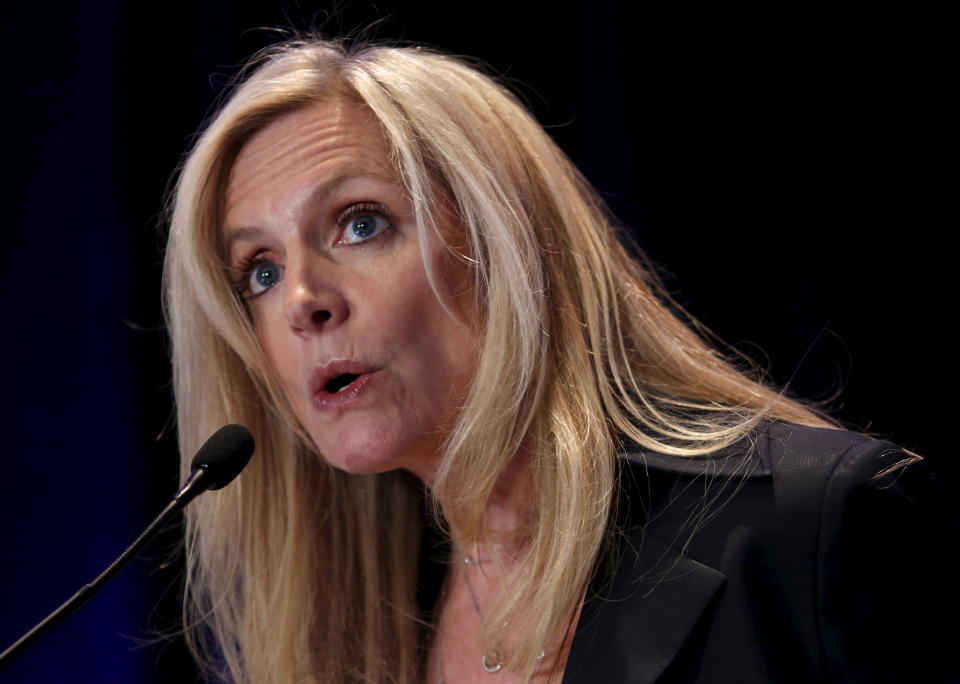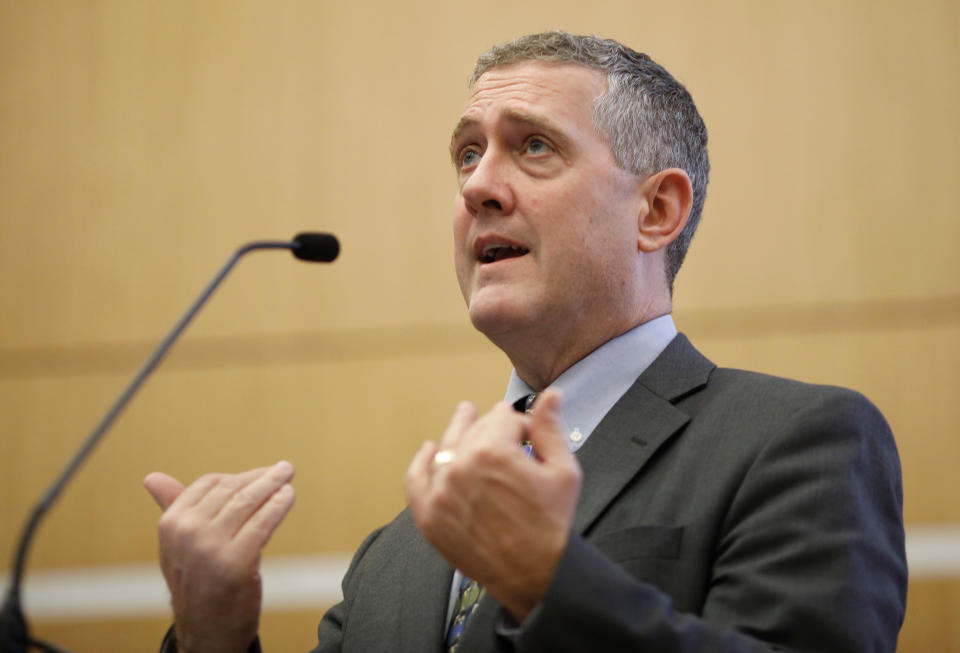Federal Reserve may lose 'patience' on Wednesday
Will the Federal Reserve message that it is no longer “patient” at the conclusion of its Federal Open Market Committee meeting on Wednesday?
The semantics behind the word “patient” have been dissected since Fed Chairman Jerome Powell first deployed the word in the Fed’s January 31 meeting, when policymakers flipped dovish and softened their stance on wanting to raise interest rates to the economy’s “neutral” level.
Powell’s “pause” hinted that the Fed was still leaving rate hikes on the table.
But building trade tensions and lackluster economic data has pushed some Fed officials to publicly acknowledge the case for a rate cut. And expectations for the Fed to drop its “patient” language, in addition to one or two dissenting votes, could make the June meeting the tipping point for the “pause” to turn into a full stop.
Wall Street is expecting the FOMC to keep rates steady at the current target range of 2.25% to 2.5%, but Powell’s commentary — in addition to the dot plots scheduled for release — will be increasingly in view as markets try to decipher the degree of dovishness as the Fed flips more neutral.
Flexible?
Goldman Sachs wrote June 14 that the Fed is likely to drop the word “patient,” and Barclays predicted that the Fed will replace the word “patient” in the FOMC statement with “flexible.”
“[W]e think the word ‘patient’ in the FOMC statement has served its useful life,” Barclays wrote June 13. “In our view, retention of ‘patient’ would likely sound too hawkish to markets that are already pricing easing in July and around 100 [basis points] of easing over the next four quarters.”

Key Fed officials have already hinted at the possibility of easing policy. On June 4, Powell sent markets higher after he delivered prepared remarks promising to “act as appropriate to sustain the expansion,” referring to the downside risks of the trade spat between the U.S. and China. In May, trade discussions broke down and the U.S. increased tariffs on about $200 billion worth of Chinese imports from 10% to 25%. The administration has threatened another round of tariffs, on an additional $300 billion worth of goods.
Fed Governor Lael Brainard echoed Powell’s comments in an interview with Yahoo Finance the day after.
“Trade policy is definitely a downside risk to the economy, and our job is to sustain the expansion,” Brainard said on June 5. “And we’ll need to see going forward what that means for policy.”
[See Also: Transcript of Fed Governor Lael Brainard’s appearance on Yahoo Finance]
Although neither Powell nor Brainard committed to explicitly lowering rates, their stated commitment to extending the U.S. expansion reflects the acknowledgement of downside risks to the economy.
The Fed’s softer tone also comes amid weaker economic data since the Fed’s last meeting on May 1. The jobs report for May missed estimates on payroll gains, and tepid wage growth pointed to a labor market that may be running below full employment. Inflation, which has consistently run below the Fed’s 2% target, also remains a conundrum for policymakers worried about slowing economic activity.
A dissent, or two
Abandoning the “patient” language may open the door to future rate hikes, but the June meeting may also see explicit calls from some voting members to cut rates.

St. Louis Fed President James Bullard and Chicago Fed President Charles Evans, both voting members of this year’s FOMC, could dissent if the majority of the committee decides to keep rates steady. If that happens, those would be the first dissents since Jerome Powell took over as chairman in February 2018.
Goldman Sachs and UBS wrote that they would expect Bullard to dissent if the Fed opts to hold rates steady, instead preferring that the central bank move to lower rates.
Earlier in the month, Bullard had said a rate cut would be warranted “soon” due to “too low” inflation expectations. Bullard has pointed to the rate cuts of 1995 and 1996 to illustrate the Fed’s ability to provide some “insurance” ahead of a possible slowdown.
“The Fed has done this correctly once,” Bullard said June 3.
Chicago Fed President Charles Evans, also a voting member, is a possible dissenter as well. On June 5, Evans told Bloomberg that low inflation could be a “reason for a little more accommodation.”
Although not uncommon (Yellen faced 15 dissents in her four years as chair), a dissent or two on Wednesday would signal the beginnings of an explicit tilt toward easing policy.
Most of Wall Street expects the Fed to point to a rate cut in July, but markets are pricing in a non-zero chance of a rate hike this Wednesday. As of Monday afternoon, Fed funds futures contracts were pricing in a 19.2% chance of a rate cut this week.
—
Brian Cheung is a reporter covering the banking industry and the intersection of finance and policy for Yahoo Finance. You can follow him on Twitter @bcheungz.
Lael Brainard: Regulators may be 'whittling away' at financial stability
Lael Brainard: There's 'no destination point' for full employment
Lael Brainard: Fed 'prepared to adjust policy' as trade concerns mount
Congress may have accidentally freed nearly all banks from the Volcker Rule
Read the latest financial and business news from Yahoo Finance
Follow Yahoo Finance onTwitter,Facebook,Instagram,Flipboard,SmartNews,LinkedIn, YouTube, and reddit.
